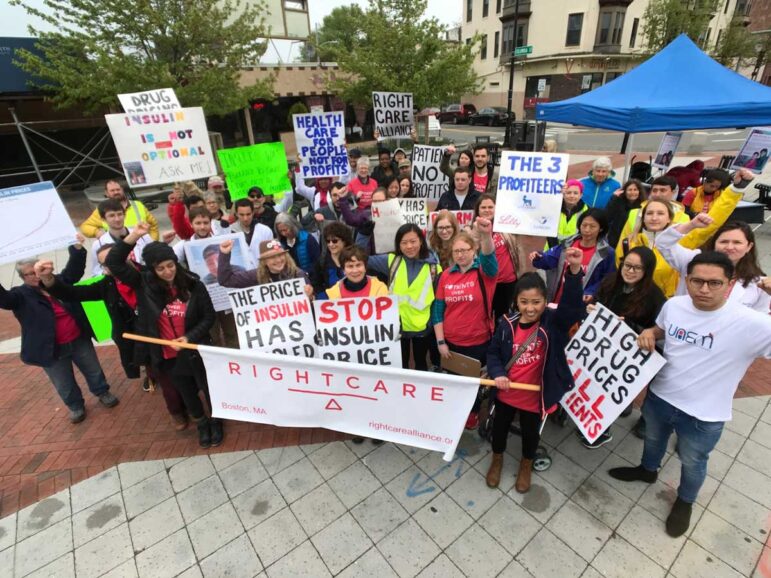Insulin manufacturer Eli Lilly announced yesterday that it would be cutting the list price of its generic insulin products significantly. This move comes after decades of advocacy work by patients and clinicians alike, including our sister organization the Right Care Alliance. What does this tell us about the drug pricing landscape?
An overview
The price of insulin has been a hotly-debated topic for decades, as prices rose exorbitantly and patients’ ability to pay dropped. In 1999, a vial of Humalog cost $21. Just twenty years later, the same vial costs $332. That’s a 1000% increase. Given that patients can die without it, it should be easier to access. Instead, some Americans have been rationing or foregoing their medication.
For years, advocates have been demanding reasonable pricing from the “big three” insulin manufacturers Eli Lilly, Sanofi, and Novo Nordisk. In 2018, the Right Care Alliance organized a coalition of patients and healthcare workers to protest the price of insulin. They showed up at the doors of Sanofi’s offices in Cambridge, MA with two mothers carrying the ashes of their children who died because they couldn’t afford insulin. In November of last year, a journalist trolled Eli Lilly by impersonating their Twitter account and tweeting “We are excited to announce insulin is free now,” sparking deep public discussion on the unreasonable drug pricing.
While the Inflation Reduction Act capped insulin prices at $35 a month for those covered by Medicare, it didn’t help those with Medicaid, private insurance, or no insurance. Just a few weeks ago, President Biden called for insulin price caps for all in his State of the Union speech.
The basics
Eli Lilly is the first of the major insulin manufacturers to willingly cap their insulin prices. Their new pricing policy drops a vial of insulin from $82 to $25 and is capping monthly out-of-pocket costs at $35. The company also announced a new insulin product intended to compete with a version of Sanofi’s insulin. It will be listed at a 78% discount compared to Sanofi’s pricing.
For those with commercial insurance, the $35-per-month cap will be implemented automatically when they fill their prescriptions at participating pharmacies.
For those with public insurance: Medicare members will see their prices capped at $35 a month due to the Inflation Reduction Act. However, this only applies to plans like Part D and Medicare Advantage. Right now, vials and injection pens qualify for this price reduction. This will be extended to include insulin pumps beginning in July.
For those without insurance: Costs can be capped at $35 monthly IF you acquire a savings card online.
It’s about damn time
Activists, patients, and clinicians have all been begging insulin manufacturers for decades to drop their prices. But prices kept rising despite their pleas. Over the last 20 years, overall insulin prices have risen an estimated 600%. Some patients who couldn’t afford the rising prices rationed their drugs, used expired medication, crossed country borders, and died trying to get the medication they needed. Meanwhile, the Eli Lilly CEO raked in $21.3 million in a single year.
Excessively high pricing is not unique to insulin. According to recent data, drugmakers raised prices on nearly 1,000 drugs in just January of this year. This includes top-selling drugs that haven’t changed in years, but will now cost patients more money. Drug pricing is based on what the market will bear, regardless of the cost to patients. With insulin, it may just be the case that manufacturers sense impending regulations and would rather set their own pricing than fall subject to more governmental regulations. Another factor is state action; some states have been pushing for importing insulin, and California is even trying to manufacture and sell insulin to undercut Big Pharma.
It’s clear that insulin manufacturers could’ve lowered these prices all along. After all, insulin was always intended to be accessible and affordable. By enacting these aggressive price reductions, Eli Lilly is admitting to abuse and profiteering at the expense of people’s lives. If they could make this change today, why couldn’t they do it last week? Last year? Why did they continue to raise prices and prioritize excessive profits when it is evidently feasible to have a reasonable price and still maintain a profit margin? If they’d lowered prices sooner, how many lives could’ve been saved?
